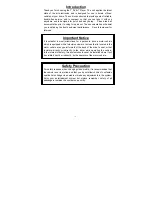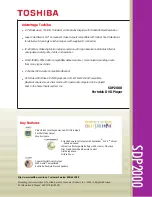
Effective April 2006
8
Required Operating Conditions
Location of Machine:
The standard Oxygen Generator is intended for use indoors.
It comes with a NEMA 12 enclosure box, which provides a degree of protection against
dust, falling dirt and non-corrosive liquids. A NEMA 4X enclosure package is optionally
available if outdoor location is required. The NEMA 4X package will provide a degree of
protection against corrosion, windblown dust and rain and splashing or hose-directed
water.
Feed Air/Ambient Air Quality:
The useful life expectancy of any PSA Oxygen
Generator is directly related to the air quality that is fed into it. Hot, humid, dirty, oily air
deteriorates and degrades the performance of molecular sieve. In order to preserve the
effectiveness and extend the useful life of the generator, all precautions should be taken
to insure that Cool, Dry, Clean, Oil-Free air is provided to it.
Changing the inlet air filter is a simple and easy way to provide the unit with
some protection. Where possible, it would be advantageous to locate the unit in an air-
conditioned space, or at least a well-ventilated area. The room should also be free of
toxic gases and high concentrations of hydrocarbons, especially carbon monoxide.
Additionally, to the degree possible, humid, oily areas should be avoided as installation
sites.
Ambient Air Temperature:
The machine is designed for use over a temperature
range of 40
°
F to 100
°
F (5
°
C to 38
°
C). Since hot air has the ability to hold much more
water, in the form of humidity, than cool air, operating the units in hot areas will reduce
the effective life of the molecular sieve.
Note: Operation outside of this temperature range will not be warranted by
OGSI
.
Feed Air Requirements:
The pressure of the incoming feed air supply should be at least 90 PSIG
(620 kPa).
Pressure below this level will not allow the machines to run at the oxygen
purity, production capacity and efficiency levels they were designed to meet.
The compressed air that is fed into the Oxygen Generator should be no
hotter than 100
°
F (38
°
C).
Air temperatures higher than this will immediately reduce the
efficiency of the machines and can damage the molecular sieve over time. Hot air is
also able to hold much more water than cool air and water ruins sieve.
The use of aftercoolers on feed air compressors and refrigerated air dryers
between the air compressor and the oxygen generator is highly recommended
and will improve the performance and lifetime of the oxygen generator.
Summary of Contents for OG-75
Page 15: ...Effective April 2006 12 Sieve Re packing Diagram...
Page 26: ...Effective April 2006 23 Process Flow Schematic...
Page 27: ...Effective April 2006 24 Process Flow Schematic Touchscreen Option...
Page 29: ...Effective April 2006 26 External Components Drawing 22 G G 22...
Page 33: ...Effective April 2006 30 Internal Components Drawing SMC SMC Direct 05 LOGIC Koyo SMC...











































